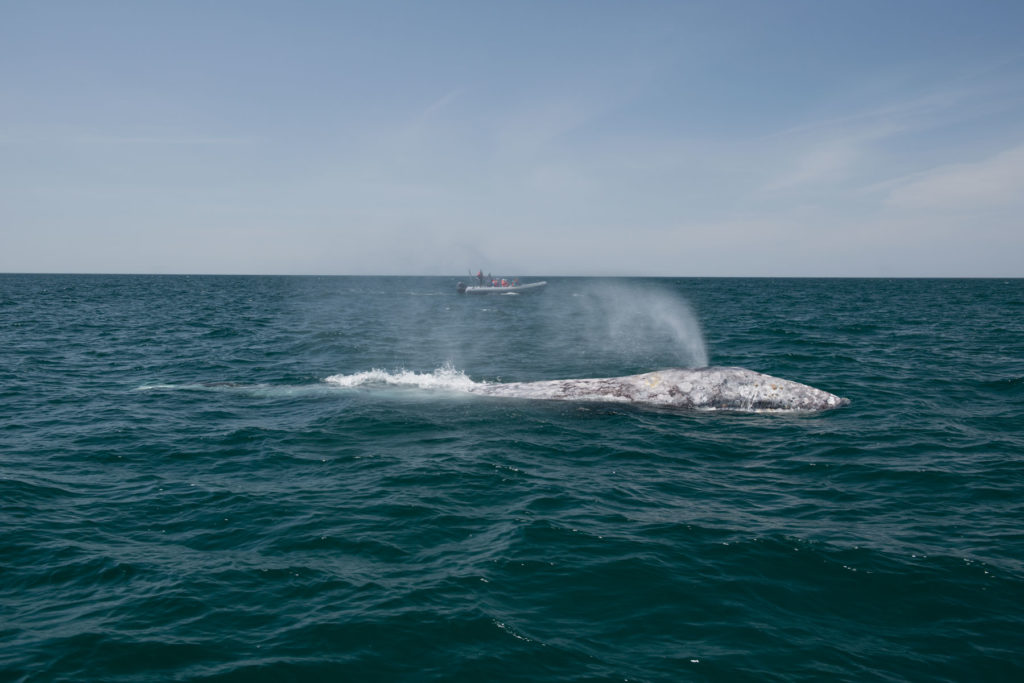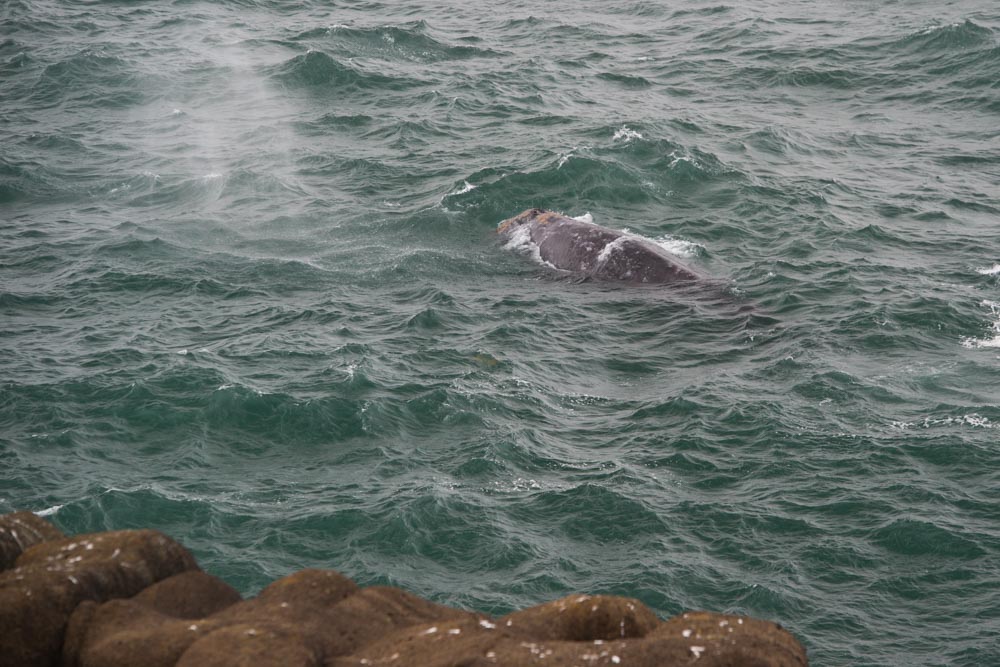How do I find whales?
Whale watching sounds pretty easy. Find whales, watch them. Well, sometimes spotting them can be a little bit tricky, especially if you haven’t done it before. There are lots of factors to keep in mind when you’re out there trying to catch a glimpse of a whale.
What are we actually looking for?
People mistake lots of things for whales. Rocks, sea lions, kelp, and just about anything else can start looking like a whale when you have been looking long enough. The main thing to remember is that you probably aren’t initially going to see much of the whale. So, what are we looking for then?
The easiest way to spot whales is to look for their spouts.
It’s not quite like the cartoons or Super Mario Brothers 2 where whales shoot solid streams of water up into the sky like a firehose. In reality, they are exhaling and the spout of water comes from the surface of the water when the whale emerges. This looks more like a puff than a geyser (depending on the species of whale). Your best bet is to look for contrasting bursts of white against a blue ocean. Once you locate the spout you can start watching for the back, dorsal hump (or ridge), and hopefully tail.
Once you observe whale behavior for a while, you’ll probably pick up on some common behavior patterns. Feeding gray whales tend to spout 3-5 times before diving and possibly showing their tails. In 3-5 minutes they should re-emerge, ready to do it all over again.
Where do I look?
Where to look can change dramatically based on the time of year. Most people have a tendency to look out towards the horizon, which is great during the southern and northern migrations. However, when summer and fall roll around people are often looking in the wrong place. During the summer months, whales get really close to shore in Oregon. Sometimes you can even make eye contact while watching them from land.
What about weather?
The right conditions can make it a lot easier to spot whales. Clear water and glassy oceans makes a whale’s spout really stand out. But in Oregon that doesn’t always happen. Things like fog and wind can make it really difficult to locate spouts. Fog will all but mask them and wind will make them disappear before you have even had the chance to see them. Try to go in the late spring and early fall for calmer conditions.
Be Patient!
Patience is really the key to watching any sort of wildlife and whales are no different. You very well could get out of the car, walk to the water and see a spout. More often than not you’ll need to scan the water for awhile before you see anything. Take some time and try to focus on a small patch of water. Keep looking for spouts within that range instead of constantly looking back and forth. If they’re out there, you’ll see them.






